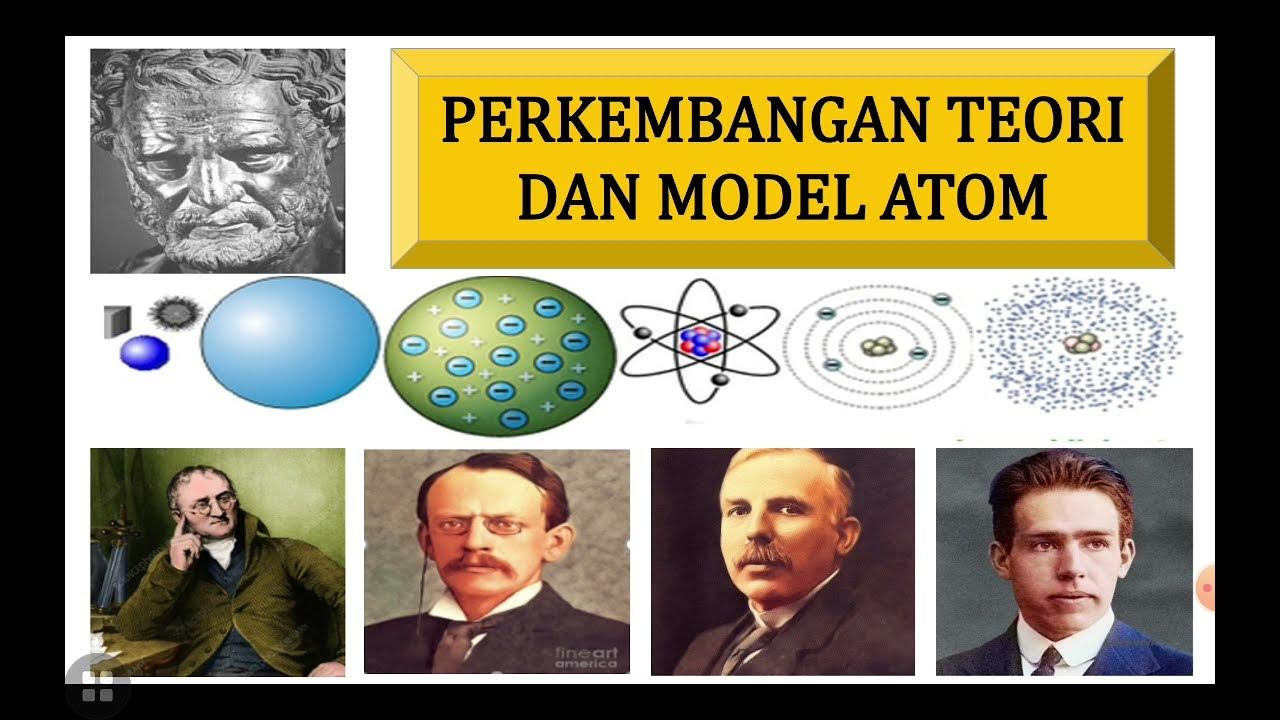Week1 Chemistry Atomic Theory Timeline Lesson 2.1a SDS
Summary
TLDRThe video explores the evolution of the atomic model, highlighting key contributions from prominent scientists. It begins with Democritus's idea of indivisible particles, or 'atomos,' followed by Dalton's assertion that atoms are indestructible. The narrative then shifts to Thomson's discovery of the electron, leading to Rutherford's identification of the nucleus. Bohr further refines the model by introducing quantized electron orbits. Finally, Schrödinger proposes that electrons exist in a cloud of uncertainty, marking a significant advancement in atomic theory. This engaging journey through scientific history showcases how new evidence reshapes our understanding of matter.
Takeaways
- 🔬 Democritus introduced the concept of 'atomos', suggesting that matter is made of indivisible particles.
- 💡 John Dalton established that all matter consists of atoms, which cannot be created or destroyed.
- ⚖️ Dalton proposed that atoms of the same element have identical mass and properties.
- 🍰 J.J. Thomson's 'plum pudding' model suggested that atoms contain negatively charged electrons within a positively charged 'soup'.
- ⚡ Rutherford discovered the nucleus and protons, demonstrating that atoms mostly consist of empty space.
- 🌌 Niels Bohr refined Rutherford's model by suggesting that electrons orbit the nucleus in fixed paths, akin to planets around the sun.
- 💥 Bohr's model proposed that electrons possess quantized energy to remain stable in their orbits.
- 🌊 Erwin Schrödinger introduced the idea that electrons exist in a cloud, where their exact position is uncertain.
- 🔄 Schrödinger's wave model is now considered the most accurate representation of atomic structure.
- 📚 The atomic model has evolved significantly with advancements in scientific knowledge and evidence.
Q & A
What was Democritus's contribution to the atomic model?
-Democritus proposed that matter is made of small, indivisible particles called 'atomos,' meaning uncuttable.
What did John Dalton discover about atoms?
-John Dalton found that all matter consists of atoms, which are tiny, indivisible particles that cannot be created or destroyed. He also stated that atoms of one element cannot be converted into atoms of another element.
How did J.J. Thomson change the understanding of the atomic model?
-J.J. Thomson discovered the electron through cathode experiments, finding that electrons are negatively charged particles that possess mass.
What was the 'plum pudding' model proposed by Thomson?
-The 'plum pudding' model suggested that atoms consist of a positively charged medium with negatively charged electrons embedded in it, like plums in a pudding.
What discovery did Ernest Rutherford make about atomic structure?
-Ernest Rutherford discovered the proton and the nucleus, showing that atoms have positively charged particles at the center and are mostly empty space.
What did Niels Bohr contribute to atomic theory?
-Niels Bohr proposed that electrons orbit the nucleus in fixed paths and have quantized energy levels, preventing them from crashing into the nucleus.
What issue arose with Bohr's model of the atom?
-The problem with Bohr's model was that it could not accurately predict the exact location of electrons in their orbits.
How did Erwin Schrödinger's findings differ from Bohr's?
-Erwin Schrödinger found that electrons do not move in fixed orbits but exist in a cloud where their position is uncertain, leading to a more accurate model of atomic structure.
Why is Schrödinger's theory considered widely accepted today?
-Schrödinger's theory is accepted as the most accurate model of atoms because it accounts for the probabilistic nature of electron positions rather than fixed paths.
What does the term 'quantized energy' mean in the context of atomic structure?
-Quantized energy refers to the discrete energy levels that electrons occupy in an atom, which prevents them from losing energy and spiraling into the nucleus.
Outlines

Этот раздел доступен только подписчикам платных тарифов. Пожалуйста, перейдите на платный тариф для доступа.
Перейти на платный тарифMindmap

Этот раздел доступен только подписчикам платных тарифов. Пожалуйста, перейдите на платный тариф для доступа.
Перейти на платный тарифKeywords

Этот раздел доступен только подписчикам платных тарифов. Пожалуйста, перейдите на платный тариф для доступа.
Перейти на платный тарифHighlights

Этот раздел доступен только подписчикам платных тарифов. Пожалуйста, перейдите на платный тариф для доступа.
Перейти на платный тарифTranscripts

Этот раздел доступен только подписчикам платных тарифов. Пожалуйста, перейдите на платный тариф для доступа.
Перейти на платный тарифПосмотреть больше похожих видео
5.0 / 5 (0 votes)






